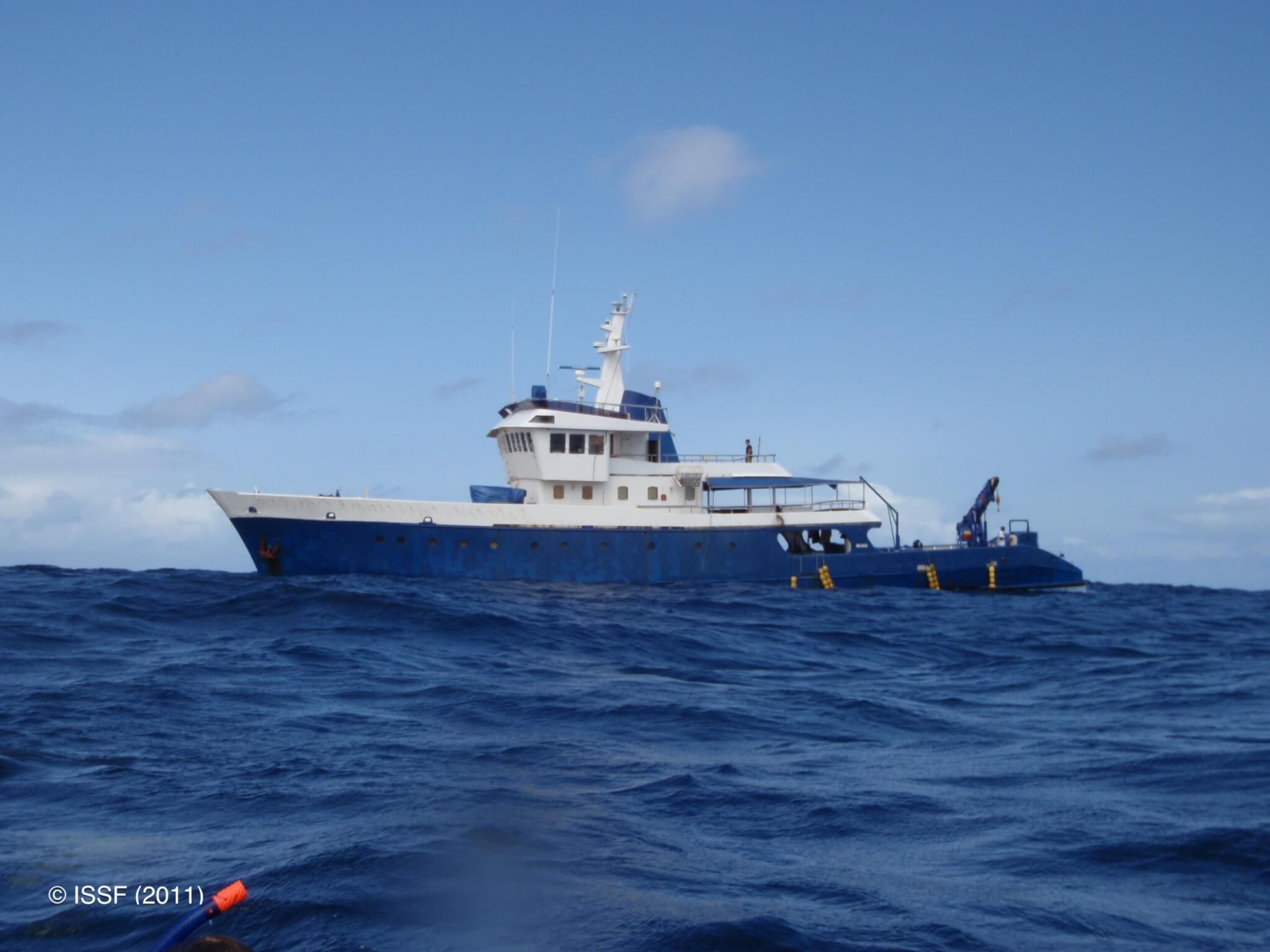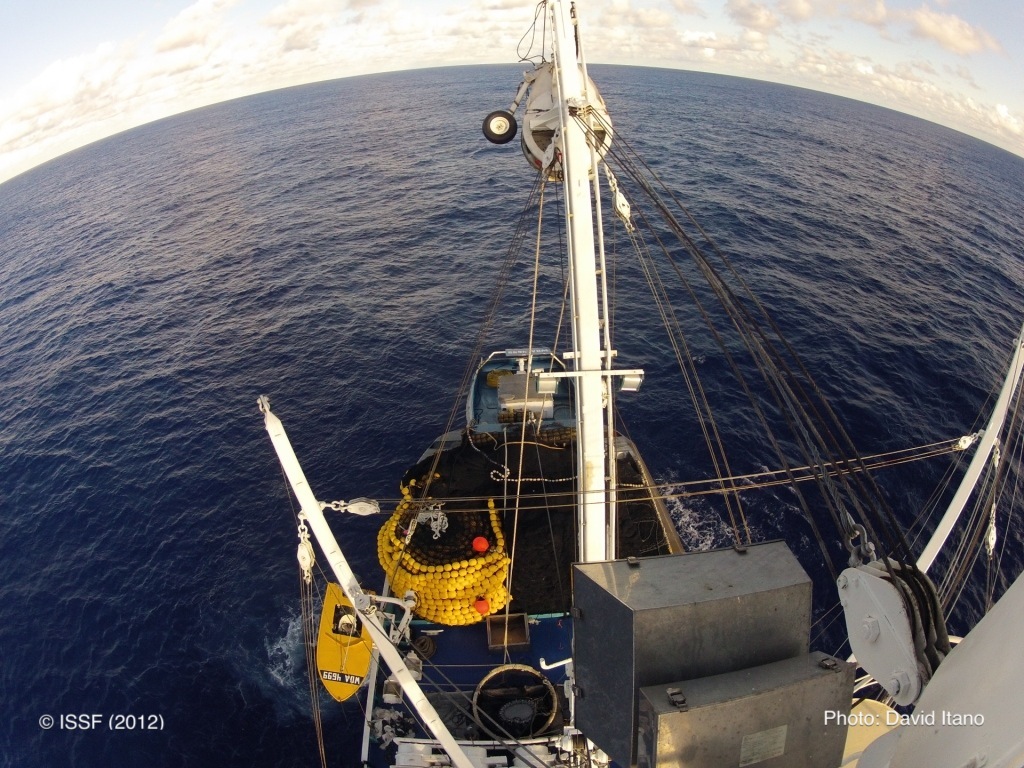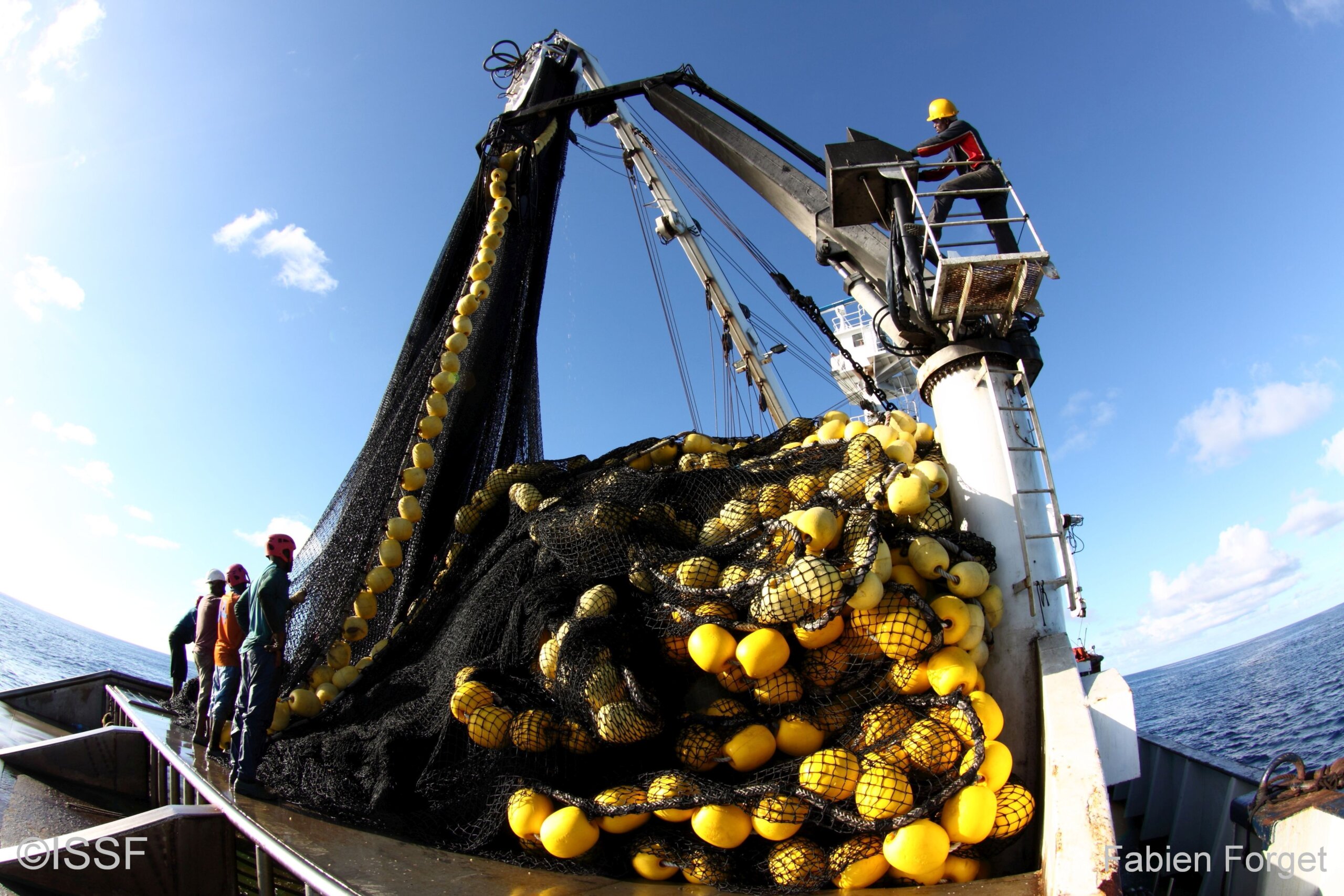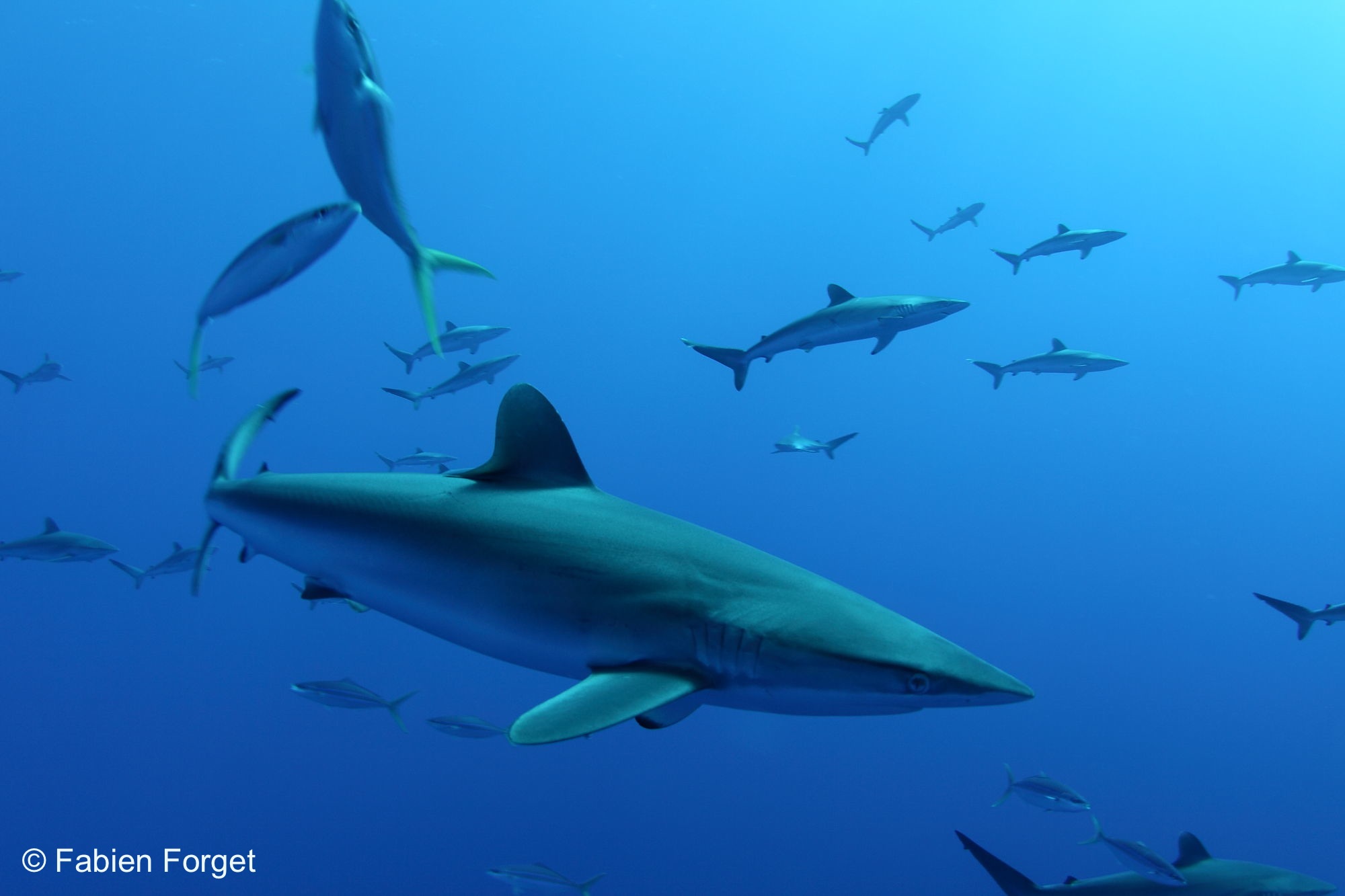Exploring Technology to Support Selective Fishing | NEW Peer Reviewed Article on Acoustic Discrimination
Featured Content
ISSF scientists are exploring innovative ways to use acoustic equipment at sea as a tool to prevent overfishing — and reduce bycatch — in purse-seine tuna fisheries.
We are studying how echosounder buoys near fish aggregating devices (FADs), for example, can detect the distinctive “sound signatures” of different tuna species — and transmit that information to vessels before fishers travel to a FAD to make a set.
If fishers can harness acoustic technology to “preemptively” estimate the type and amount of
fish (or “biomass”) gathered at a particular FAD, they can choose to fish only on FADs with higher proportions of tuna species for which stocks are in healthy condition — and avoid those that have attracted larger groups of non-target species.
Explore an interactive web feature
Peer Reviewed Article
NEW Study Demonstrates Discrimination Potential of Main Tropical Tuna Species by Acoustic Means
ICES Journal of Marine Science recently published the peer-reviewed article, “Target strength measurements of yellowfin tuna and acoustic discrimination of three tropical tuna species,” co-authored by researchers Beatriz Sobradillo, Guillermo Boyra, Jon Uranga, and ISSF’s Gala Moreno.
Purse seine fishers heavily rely on acoustic technology to detect and assess the quantity of tuna at drifting FADs. Yet, accurately distinguishing between species using solely acoustic methods is limited by insufficient knowledge about each species’ acoustic response across frequencies.
This study presents the first published frequency response at three frequencies of yellowfin tuna and demonstrates the discrimination potential of the main tropical tuna species, skipjack, bigeye, and yellowfin tuna by acoustic means. Yellowfin tuna showed a flat response, whereas previous studies have shown the contrasting responses of bigeye and skipjack. The incorporation of these specific signatures into the acoustic tools used by purse seiners holds great promise for selectively targeting tropical tuna species and reducing the carbon footprint.
Further, if used for scientific studies, it would provide a deeper understanding of the key processes related to tuna behavior around FADs. As a result, it would facilitate the development of well-informed conservation measures specifically tailored to different tropical tuna species.
Read the Article
Featured Graphic
ISSF publications as well as journal articles on acoustic discrimination research are summarized in this infographic. The timeline, updated in April 2024, includes links.
ISSF in the News
Walmart, Albertsons sign Tuna Transparency Pledge
Supermarket News
New Initiative Seeks to Make Tuna Fishing More Transparent
Oceanographic
ISSF Releases Global Tuna Report
Fish Focus



